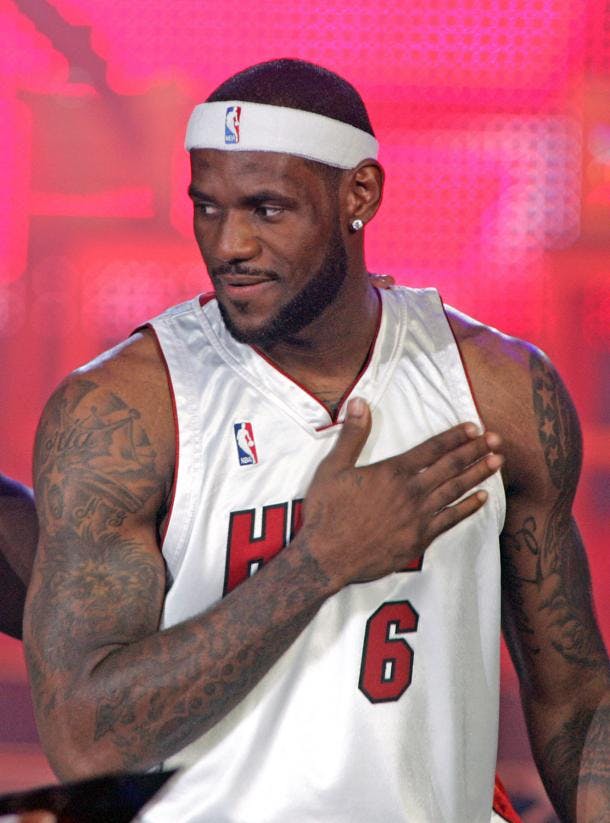I just got back from NBA Summer League in Las Vegas.
For those not in the know, it’s a time when rookies and those looking to make a team’s 15-man roster come to play for almost two weeks in scrimmages. The event is small and fairly inside. It was my second year going with the guys from The 8 Man Rotation.
The biggest names in the NBA aren’t there. There was no LeBron James. Nor was there Kevin Durant.
Instead, you had rookies getting their first taste of team action and free agents and walk on’s looking for a shot at riding the end of the bench (or just making the roster) because there is usually better money in trying to make it work in the NBA than going overseas.
Finding talent to stay competitive
The basketball can be ugly at times and while these are — by any objective measure — some of the best basketball players in the world, most of them are not the top players in the league, and, a vast majority won’t see significant time as even a Summer League starter.
It got me thinking a lot about this pursuit for top talent.
Everybody wants “A” players. Any team in the league would have welcomed LeBron James onto their team this off-season (yes, even the NBA champion San Antonio Spurs). With the collective bargaining agreement with the NBA Players Association in place, any team that signs him gets a great deal. There are only a handful of players like him ever, much less playing at any given time.
For the 26-28 teams that can’t snag a once a decade player like James or Durant, they figure out ways to remain competitive. Most teams have a great player or two, a few good ones, and then a long tail of flawed players in one way or another.
You take a look at the San Antonio Spurs and you see that method. Tim Duncan may be the best power forward to play the game, but he wasn’t the best power forward this year. You see a lot of players who are great to good to flawed, in one way or another. You look at the Miami Heat’s successful title runs and see the same line of players. Some great. Some not-so-great.
No one wins on top talent alone
Identifying the top players in the NBA is easy. If you have the salary and they have the desire to join your team, you make it happen. Convincing them to come to your team over the 29 other options? I’ll give you that.
But no team wins on top talent alone. The Spurs had nine guys this year who averaged at least 19 minutes game over the full season last year. There are probably a few names a casual fan wouldn’t recognize in that list too: Belinelli, Splitter, Diaw, and Mills.
These aren’t the top players in the league. They are good role players, with some great strengths and some significant weaknesses. And they were available within the budget the Spurs had to work with.
While everyone will talk about the stars in the NBA, especially when it comes to winning a championship, what it really comes down to is this — who can step up from your supporting cast? Even the best and most fit players need to spend time off the court. Who can give you those 10-15 minutes off the bench every night and keep you in a tight game in Memphis on a Tuesday night in January?
The difference between good teams and great teams is that talent identification didn’t end with just figuring out who can be your “A” talent. They go down the line and look at who best fits in “B” or even “C” roles on the team.
Getting the best mix of talent — within the budget
Every team has a budget they need to stay in, and, you can’t fit more than two or three top paid players on your team. With five guys as starters and at least three regular rotation players, that means every team out there is playing a lot of non-top talent night after night.
You won’t see their highlights on SportsCenter. Their contribution is critical, though. And smart teams have spent time and significant money finding better ways to identify who will be the role players and backup talent needed to win.
When you’re talking about the “War for Talent” and hunting purple squirrels, just remember one thing: Successful hiring is more than just finding the best talent.
It’s about finding the right talent, for the right price, that fits with the current skill set of the organization. Anybody should be able to identify the best, and if you have the budget to afford hiring the best in every position, you are welcome to try.
The trick? Finding solid B and C level talent
Smart teams make strategic moves to find the right A, B, and C talent to fill a roster without going over their cap. The best ones can spot B and C talent and know where they fit in.
Let your competitors figure out where they can find a LeBron James of your industry while you figure out how to fill your team with solid contributors who can make a difference, day after day, at the right price.
This originally appeared at Lance Haun’s (Life Between the Brackets) blog.
